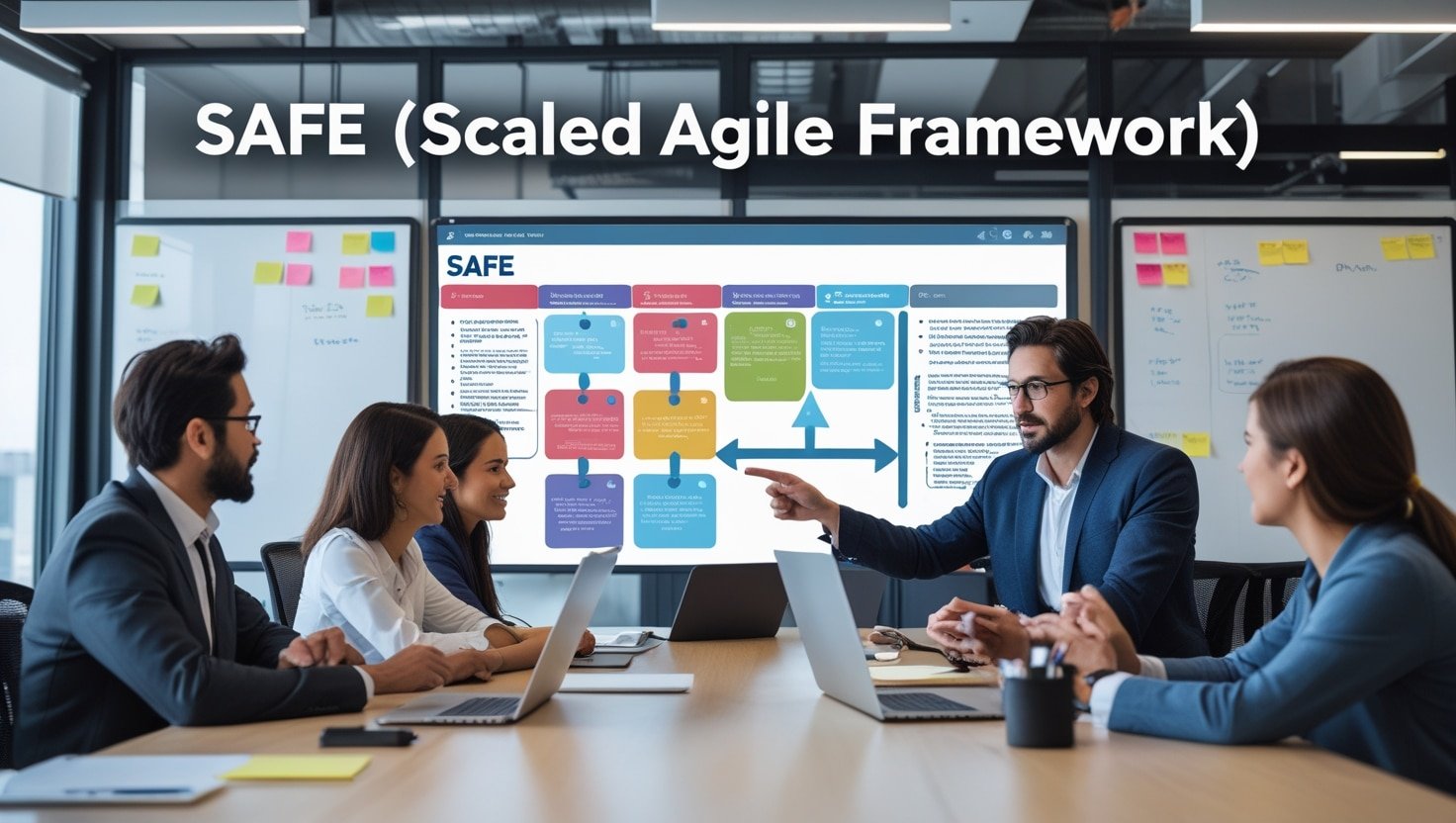Modern businesses adopt agile approaches at increased frequencies to succeed in fast business conditions while delivering immediate value. Business leaders use the Scaled Agile Framework (SAFe) as one of the most popular methods to implement agile principles at an enterprise scale. The SAFe Scrum Master maintains a core position within this approach because they unite team agility with business targets. This research evaluates six key elements of SAFe Scrum Master functions to deliver an extensive understanding of their responsibilities and challenges as well as their effects on organizational performance.
1. The Evolving Role Of A SAFe Scrum Master
The traditional Scrum Master who maintains a single team does not represent all the possible responsibilities of the SAFe Scrum Master. A SAFe Scrum Master operates within a complex framework which requires maintaining team-level requirements alongside business-level objectives while carrying out tasks different from a standard Scrum Master who addresses solitary teams. These leaders maintain program increment and release train alignment by acting between Agile teams and organization-wide departments. Improving understanding of business contexts and communication skills and organizational navigation ability becomes essential for sustaining the essential servant-leadership principles of the Scrum Master role during this professional advancement.
2. Core Responsibilities That Drive Team Performance
The primary responsibility of SAFe Scrum Masters involves optimizing team achievement in the scaled Agile structure. A SAFe Scrum Master maintains focus and productivity for Scrum processes by conducting daily sessions for meetings including stand-ups and sprint planning and reviews and retrospectives. A SAFe Scrum Master works to actively remove all technological as well as procedural and interpersonal hurdles which block team advancement. SAFe Scrum Masters teach agile principles and practices to team members so they can improve their application of agile methodologies. Additionally, they keep metrics and information radiators that measure health and development available, fostering openness that fosters confidence across the business and facilitates data-driven decision making.
3. Essential Skills For SAFe Scrum Master Success
SAFe Scrum Masters that are successful have a special combination of technical expertise and people skills that allow them to succeed in challenging business settings. They can lead fruitful talks and decision-making processes without taking over conversations because of their strong facilitation abilities. Their proficiency in conflict resolution enables them to resolve disputes and team dynamics in a positive way. They can comprehend how team activities affect the larger corporation and vice versa thanks to systems thinking. Change management skills are essential for teams to successfully negotiate organizational transformations and implement new practices. Beyond this, successful SAFe Scrum Masters motivate their teams to completely adopt the agile mentality by exhibiting tolerance, compassion, and an unrelenting dedication to ongoing development.
4.Navigating The SAFe Framework Effectively
The SAFe framework differs from conventional Scrum deployments in that it offers special possibilities and difficulties. To prepare their teams for success in the broader corporate environment, SAFe Scrum Masters need to be knowledgeable with release trains, value streams, and program increment planning. They organize dependencies and make sure that team outputs are in line with program goals in close collaboration with Release Train Engineers (RTEs). In order to resolve issues between teams and coordinate efforts throughout the company, SAFe Scrum Masters take part in Scrum of Scrums meetings. They protect teams from needless complexity while assisting them in understanding their place in the larger scheme of things. Strong organizational awareness, strategic thinking, and the capacity to transform team-level issues into enterprise-level goals are all necessary for this delicate balancing act.
5. Common Challenges And Practical Solutions
Even seasoned SAFe Scrum Masters face difficulties that try their patience and abilities. Team members can hamper progress used to old methods of working being resistant to change; this can be overcome by patient instruction, early value demonstration, and acknowledging little victories. Tension frequently results from juggling competing priorities between team obligations and organizational expectations; effective communication and negotiating techniques assist get through these situations. It's still difficult to manage interdependence between teams; establishing connections with stakeholders and other Scrum Masters builds networks that make coordination easier. Focusing on value-based measurements instead of activity-based ones helps preserve meaningful progress monitoring while lowering administrative load when metrics and reporting obligations become too much to handle.
6. Measuring Impact And Demonstrating Value
Measurable gains in team performance and organizational results are how effective SAFe Scrum Masters continuously establish their worth. Team velocity and predictability are important metrics to monitor as they demonstrate the team's capacity for reliable delivery. A shorter cycle time means that clients will receive value more quickly. Team engagement and health scores reflect the human component of performance sustainability. The final effect of the team's efforts is gauged by customer satisfaction. Improved communication patterns, more active team debates, higher invention, and enhanced cross-team cooperation are all signs of a flourishing agile culture, therefore qualitative indicators are just as important as quantitative ones. By demonstrating these enhancements, SAFe Scrum Masters solidify their position as vital contributors to the success of the business and advocates for ongoing development.
Conclusion
The SAFe Scrum Master Training in Hyderabad gives professionals access to major advantages which extend past basic Scrum mastery. The SAFe Scrum Master certification supports professionals to succeed in modern complex business settings through its development of change management abilities along with leadership enhancement and expanded career prospects while improving team coordination and value delivery and advancing enterprise agile knowledge. Organizations across industries will increasingly rely on certified SAFe Scrum Masters because of their escalating need to handle agile practice expansions. The certification presents itself as an advantageous career investment option for experts who want to advance and drive substantial success for their organizations.



